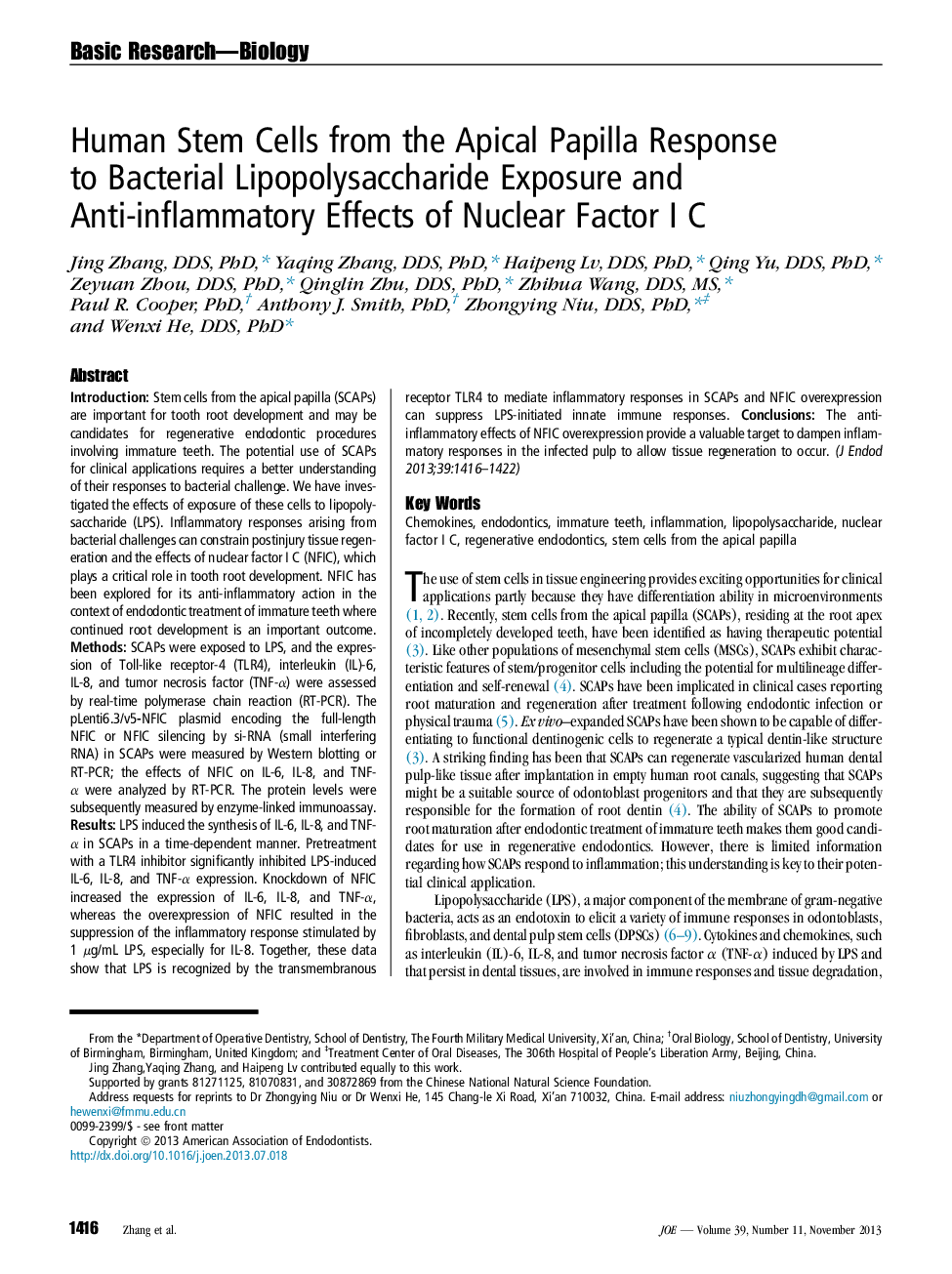| کد مقاله | کد نشریه | سال انتشار | مقاله انگلیسی | نسخه تمام متن |
|---|---|---|---|---|
| 3146968 | 1197333 | 2013 | 7 صفحه PDF | دانلود رایگان |

IntroductionStem cells from the apical papilla (SCAPs) are important for tooth root development and may be candidates for regenerative endodontic procedures involving immature teeth. The potential use of SCAPs for clinical applications requires a better understanding of their responses to bacterial challenge. We have investigated the effects of exposure of these cells to lipopolysaccharide (LPS). Inflammatory responses arising from bacterial challenges can constrain postinjury tissue regeneration and the effects of nuclear factor I C (NFIC), which plays a critical role in tooth root development. NFIC has been explored for its anti-inflammatory action in the context of endodontic treatment of immature teeth where continued root development is an important outcome.MethodsSCAPs were exposed to LPS, and the expression of Toll-like receptor-4 (TLR4), interleukin (IL)-6, IL-8, and tumor necrosis factor (TNF-α) were assessed by real-time polymerase chain reaction (RT-PCR). The pLenti6.3/v5-NFIC plasmid encoding the full-length NFIC or NFIC silencing by si-RNA (small interfering RNA) in SCAPs were measured by Western blotting or RT-PCR; the effects of NFIC on IL-6, IL-8, and TNF-α were analyzed by RT-PCR. The protein levels were subsequently measured by enzyme-linked immunoassay.ResultsLPS induced the synthesis of IL-6, IL-8, and TNF-α in SCAPs in a time-dependent manner. Pretreatment with a TLR4 inhibitor significantly inhibited LPS-induced IL-6, IL-8, and TNF-α expression. Knockdown of NFIC increased the expression of IL-6, IL-8, and TNF-α, whereas the overexpression of NFIC resulted in the suppression of the inflammatory response stimulated by 1 μg/mL LPS, especially for IL-8. Together, these data show that LPS is recognized by the transmembranous receptor TLR4 to mediate inflammatory responses in SCAPs and NFIC overexpression can suppress LPS-initiated innate immune responses.ConclusionsThe anti-inflammatory effects of NFIC overexpression provide a valuable target to dampen inflammatory responses in the infected pulp to allow tissue regeneration to occur.
Journal: Journal of Endodontics - Volume 39, Issue 11, November 2013, Pages 1416–1422